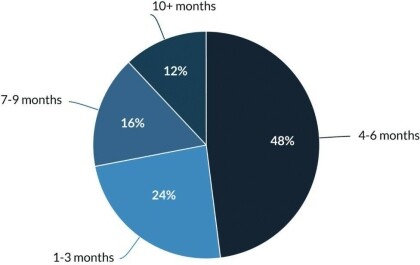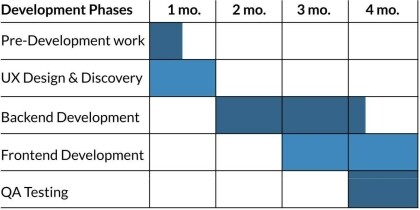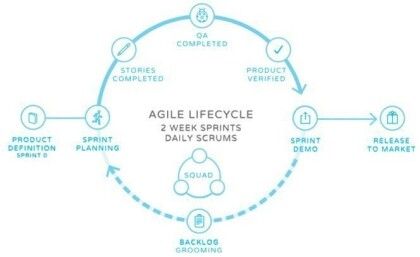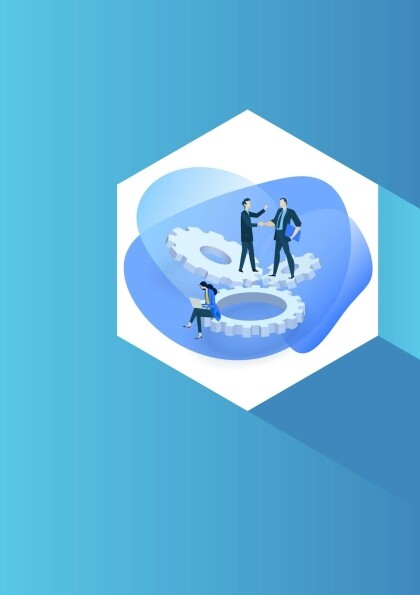A DEFINITIVE GUIDE TO AGILE SOFTWARE DEVELOPMENT by a3 logics (the best books to read .TXT) 📖

- Author: a3 logics
Book online «A DEFINITIVE GUIDE TO AGILE SOFTWARE DEVELOPMENT by a3 logics (the best books to read .TXT) 📖». Author a3 logics
as underestimated timeframes, ever-growing costs and resourcing requirements, compromised quality, and insufficient progress reporting. Frequent communication and testing ensure predictable project velocity and identifies issues early on so changes can be made quickly. The most common scrum practices for communication are sprint planning, daily standups, and retrospectives–all of which contribute to a faster time to market.
Typically, the timelines for mobile app development looks like this:

47
But there is no definitive answer for a project’s timeframe. For this reason, the remainder of this article will look at the agile development software process in its entirety as well as the factors affecting the timeline to give you a better idea of how long it takes to build an app.
The mobile app development process has different stages and each stage occupies a different time slot. From the initial discovery phase to product launch, the entire process is interdependent. With that said, the size and complexity of the product will always directly influence the project timeline.

Before any development begins, the project starts with a reasonably substantial research phase. It’s critical to determine what you are trying to achieve, and more importantly, how will your business strategy translate into a mobile product strategy. You’ll need to give thoughtful consideration to your current business processes, your target audience, and—of course—your competitors.
Outlining Business Objectives
Take some time to plan out what will make your app successful. Write down all the ways your app will address the needs of your company, as well as your users. Here are some
questions to keep in mind when defining the business logic behind your app:
What is the purpose of the product?
What is the overall vision for the product?
What current problem(s) does it address?
Will this product refine or improve a current business function? Will this product create a new business function?
What is the product’s business or monetization model?
Is this app being built from scratch, or are there existing assets that can be incorporated?
Is this project attainable?
It’s important to have a clear vision for your product before you partner with a firm. With a clear idea, your development team will be able to focus on a definite end goal, and your existing research will support any decision made in the process.
Defining the Target Audience
For a mobile product to address genuine user needs, product teams need a comprehensive understanding of the people who will use the product–their behaviors, goals, challenges, motivations, needs, demographics, interests, and unique identifiers. In mobile app development, user research informs strategic product decisions to create a user-centric design. You will have to create user personas founded in both qualitative and quantitative research. Conduct surveys, organize focus groups, perform field research, and leverage any existing information to get a well-rounded understanding of the people who will use your product.
Performing a Competitor Audit
Take a look at the competition: how will you differentiate your product from what already exists in the market? Researching other products will help you determine what feature- set will position your app as more valuable than the rest.
49
PRODUCT DESIGN AND DISCOVERY (2 TO 8 WEEKS)This phase should begin by working through business requirements and designing wireframes that accommodate the given requirements. The results of this phase should ideally include a fully-completed set of mock-ups, as well as user stories for every feature in the app. Everything should be in place for developers to know exactly what they need to build. Due to parts of the requirements and design constantly iterating, the development process can begin prior to fully completing this phase, as some requirements will be approved and finalized before others.
Sprint -1
The first few weeks of the Product Design and Discovery phase focuses on design preparation. The product team starts by pulling together the design artifacts and the technical requirements document. This document includes a wireframe prototype and product mockup created by your team’s UX Designer and Solutions Architect. As well, the Solutions Architect will put together the project’s technical blueprint and the UX designer will compile all of the branding guidelines. After review, the team’s Project Manager signs off on the requirements document and the team moves into Sprint 0.
Sprint 0
At this stage, the Project Manager works with the Solutions Architect to create the project roadmap. In the agile software development lifecycle, a roadmap is the high- level project plan, and only prioritizes immediate requirements. Any remaining feature requirements are considered targets and not commitments. The project roadmap is designed this way to account for market fluctuation. Also, a flexible roadmap allows you to iteratively learn what features work to achieve your goals, as well as what your customers expect with each release.
Creating epics further defines the project roadmap. An epic is a development artifact that classifies a specific amount of work. The product team develops epics for multiple focus
areas of the project. In the project backlog, an epic serves as a placeholder for a product requirement and details the final output of a user’s need. After the epics are complete, the Project Manager organizes them into sprints and creates the first-stage backlog.
DEVELOPMENT (6 TO 24 WEEKS)
A project’s total development time is budgeted into sprints, which generally last 2 to 3 weeks. Each sprint has its own goals, usually a set of features or a section of the app that should be completed by the time the sprint ends. Development time between apps varies greatly, as some features can take weeks to develop on their own. For example, adding social media integration (Facebook/Twitter sharing and login), or implementing a more customized user interface (UI) will require more development time. The app should be feature-complete after this phase, and any additional development aims only to fix discovered bugs and issues.
As features will be completed along the way in the development phase, QA (quality assurance) can begin during this phase. Projects can range from international household name brands to small startups, which have varying amounts of flexibility and complexity
51
in terms of iteration. It may be, in some cases, more difficult to change features and requirements due to longer and more formal approval processes, but it is always important to ensure that the same meticulous attention to detail is maintained throughout each process.
For most mobile apps, it will be necessary to have both app development (front- end), and web services (back-end). We define the front-end as the UI and the very practical interactions between users and the app. Back-end development supports front-end, ranging from pulling data to display on the screen to handling user signups. If resources permit, both the front-end and back-end can be developed concurrently, rather than consecutively. Doing so will generally save development time without compromising product quality.
QUALITY ASSURANCE (QA) TESTING AND RELEASE (2 TO 8 WEEKS)
When it comes to mobile apps, users have incredibly high expectations for performance. Testing your app is crucial for the success of your product. In the final stretch, the app should be tested against requirements to ensure that they are sufficiently fulfilled. All features should be thoroughly tested, and any bugs or issues should be resolved prior to release. When the app is ready for release, it is put up for approval in the app store(s).
As new requirements and unplanned feature requests come to light through testing, the Solutions Architect will assess their feasibility and work them into the existing architecture. The UX Designer will create new visuals as necessary, and QA will reevaluate the evolving acceptance criteria. If issues are present, developers will adjust the code accordingly.
Of course, the information above can only give you a rough idea of the agile software development lifecycle and all the work that goes into each phase of development.
Delays are often one of the most significant challenges faced by companies trying to ship a mobile product. The question “how long does it take to build a mobile app?” should be posed more accurately as “how long does it take to build my app?” Every mobile app development project is unique down to the most intricate details and features. The most effective way to reduce time to market is to practice iterative development and release working software quickly and frequently using the agile scrum framework.






Comments (0)